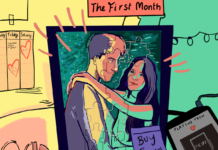The countdown clock hits t-minus 10 seconds until liftoff. The crowd falls silent. Three seconds to go.
The serenity of the Florida evening is shattered by the sudden roar of 31 raptor engines. The 110-metre tall rocket rises out of its launch cradle. The darkness is shattered by a second sunrise as the rocket clears the tower.
Within three minutes, the nine-metre-wide first-stage booster separates from the spaceship and returns to Cape Canaveral, Fla. Within nine minutes, somewhere between seven to nine artists are in orbit over the Earth. They are floating around in a spaceship that has more internal passenger volume than a Boeing 747 jumbo jet.
Over the next week, they will journey to the moon and back, completing a trip that no human has since 1971, when the last Apollo crew witnessed the last earthrise over the surface of the moon.
The trip described above was announced on Sept. 17 and is scheduled to take off in 2023. The flight is paid for by Japanese entrepreneur Yusaku Maezawa. He wants to invite six to eight of his favourite artists from Earth to accompany him on the 384,000-kilometre journey to the moon. His hope is that the trip will inspire these artists to produce works that demonstrate art as a unifying human experience. Maezawa wonders what Picasso would have created if he had the opportunity to go on a flight around the moon.
Sometime after the 2023 flight, Maezawa will curate an exhibition of the works produced after the flight called #dearMoon.
Reaching the moon with so many people will be a great leap in rocket science. In 1969, when the first humans completed a very similar loop around the moon, they were just three men in a tiny capsule. When their mission had finished, a capsule the size of an SUV was all that was left from the enormous rocket that started the journey.
Elon Musk’s company SpaceX is changing the economics of spaceflight with reusable rockets. The Big Falcon Rocket (BFR) will be its biggest rocket yet. While for this flight, it will carry only nine people, someday it could carry 100 people at a time to Mars and back, or hundreds of people in hoops around the Earth. The BFR will further shrink our planet and bring other planets within reach.
Any future means of transportation tend towards accessibility with time. In the early 20th century, airplanes were a plaything of governments and millionaires, but innovation funded by their support eventually made air travel accessible to millions.
The same will be true for space travel. An event like #dearMoon can support the birth of a new means of transportation. If the event can also inspire artists to bring the message of peace and unity that space travel naturally infuses into the lives of those who have experienced it, that is a bonus for us on the ground.
In the 1985 book Contact, Ellie Arroway sees a stunning galaxy laid out in front of her. Unable to describe it, she utters, “They should have sent a poet.”
I’m thrilled to see that concept finally being taken seriously.
Just as people on both sides of the Atlantic watched the flight of Charles Lindbergh crossing the Atlantic solo for the first time, I will be watching Yusaku Maezawa and his team of artists take a loop around the moon.
Perhaps someday we will all have the opportunity to touch the moon because of the work done with the support of #dearMoon. Perhaps someday, the art inspired by this trip will stay the hand of some bloodthirsty warmonger. Perhaps someday, a kid growing up on Mars will be listening to a song inspired by #dearMoon and that kid will grow up to be the next Yusaku Maezawa or Elon Musk.
Graphic by Paloma Callo




![Here’s how your favorite media platforms shape your world view without you realizing it Advertising revenue and subscriptions are the main source of income for news outlets. [Graphic by Sara Mizannojehdehi]](https://charlatan.ca/wp-content/uploads/2021/07/11BE7ADB-1CC8-46E8-ADB4-568B3C7F1265-218x150.jpeg)

